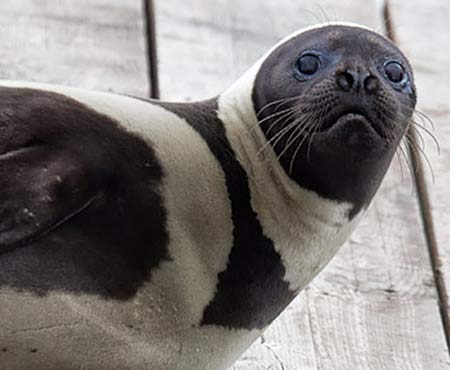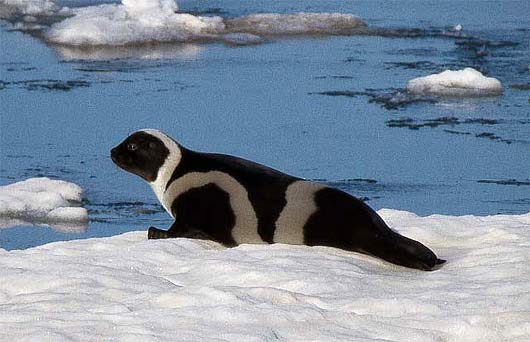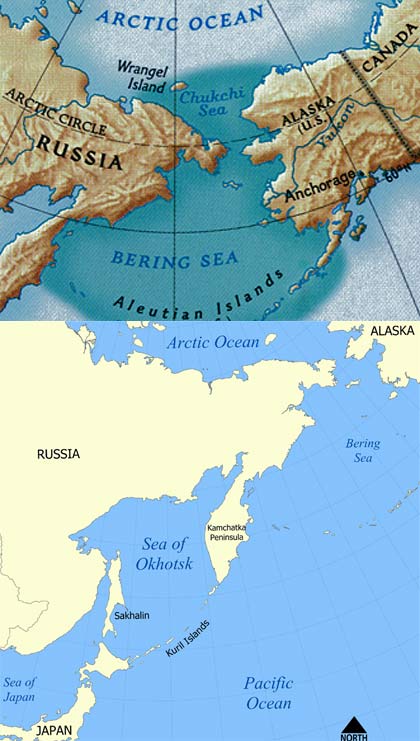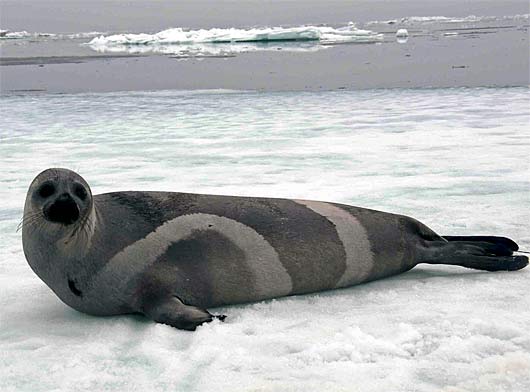Ribbon Seal – Chocolate and Cream Colored Arctic Mammal

This handsome species of ocean mammal, also called the banded seal, gets its common name from the distinctive coat: a background of deep, chocolately brown, interwoven with broad, creamy white stripes that encircle the neck, front flippers, and the tail. With all that cream and chocolate maybe it should be called a mochaccino seal! Starbucks should name a beverage after it (it would be an iced beverage of course). This coat however, is only that of the male. The female does not possess such vibrant tones but is much paler and grayer than her counterpart. Adults of both sexes average about 5 feet (1.5 m) in length and 200 pounds (91 kg) in weight. Ocean fish like cod and pollock along with squid and octopus are thought to be the main components of their diet.


Rarest of all northern seals, the ribbon seal has ranges in three seas of the Northern Pacific and Arctic Oceans. One of those ranges, in the Bering and Chukchi Seas, has about 100,000 individuals. The other range in the Sea of Okhotsk has perhaps 130,000 seals. There does not seem to be much intermingling of the two groups. The population living in the Bering and Chukchi seas spends the winter and spring along the southern edge of the pack ice. With the population count this low, governing bodies are considering adding the seal species to endangered species lists.

Mother ribbon seals give birth to white-coated pups on the sea ice in April through May after a pregnancy of about nine and a half months. The pups nurse with the mother for only about a month before they go off alone. Very soon they are able to dive and capture prey for themselves. They have to be on the lookout for predators such as sharks, orcas, polar bears and people. This is another poor species of seal that has not always been treated well by mankind: Russian traders once used the banded coats as coverings for designer luggage trunks and Eskimos made water-proof clothes bags out of the skins.

